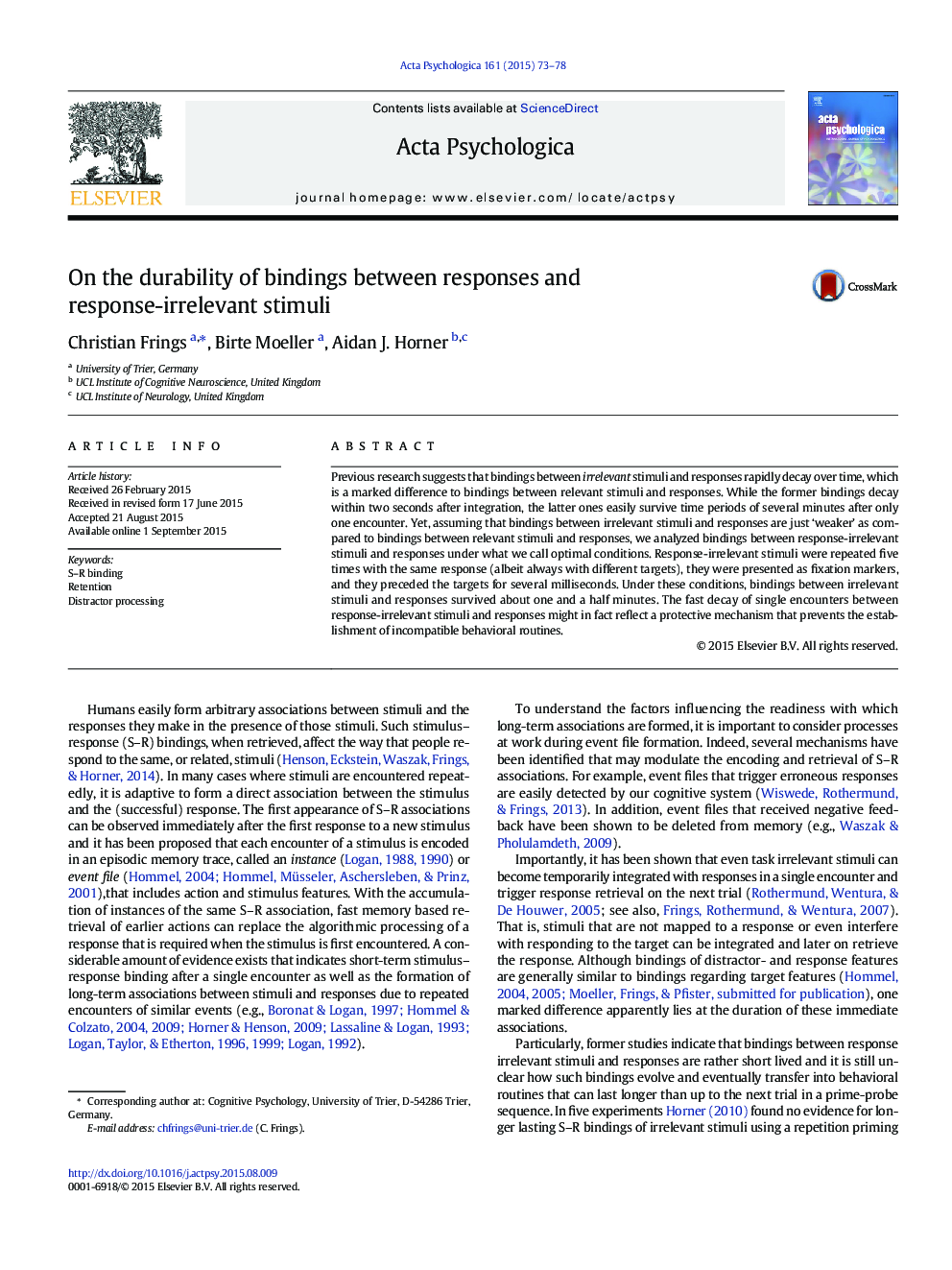| Article ID | Journal | Published Year | Pages | File Type |
|---|---|---|---|---|
| 7277229 | Acta Psychologica | 2015 | 6 Pages |
Abstract
Previous research suggests that bindings between irrelevant stimuli and responses rapidly decay over time, which is a marked difference to bindings between relevant stimuli and responses. While the former bindings decay within two seconds after integration, the latter ones easily survive time periods of several minutes after only one encounter. Yet, assuming that bindings between irrelevant stimuli and responses are just 'weaker' as compared to bindings between relevant stimuli and responses, we analyzed bindings between response-irrelevant stimuli and responses under what we call optimal conditions. Response-irrelevant stimuli were repeated five times with the same response (albeit always with different targets), they were presented as fixation markers, and they preceded the targets for several milliseconds. Under these conditions, bindings between irrelevant stimuli and responses survived about one and a half minutes. The fast decay of single encounters between response-irrelevant stimuli and responses might in fact reflect a protective mechanism that prevents the establishment of incompatible behavioral routines.
Keywords
Related Topics
Life Sciences
Neuroscience
Cognitive Neuroscience
Authors
Christian Frings, Birte Moeller, Aidan J. Horner,
